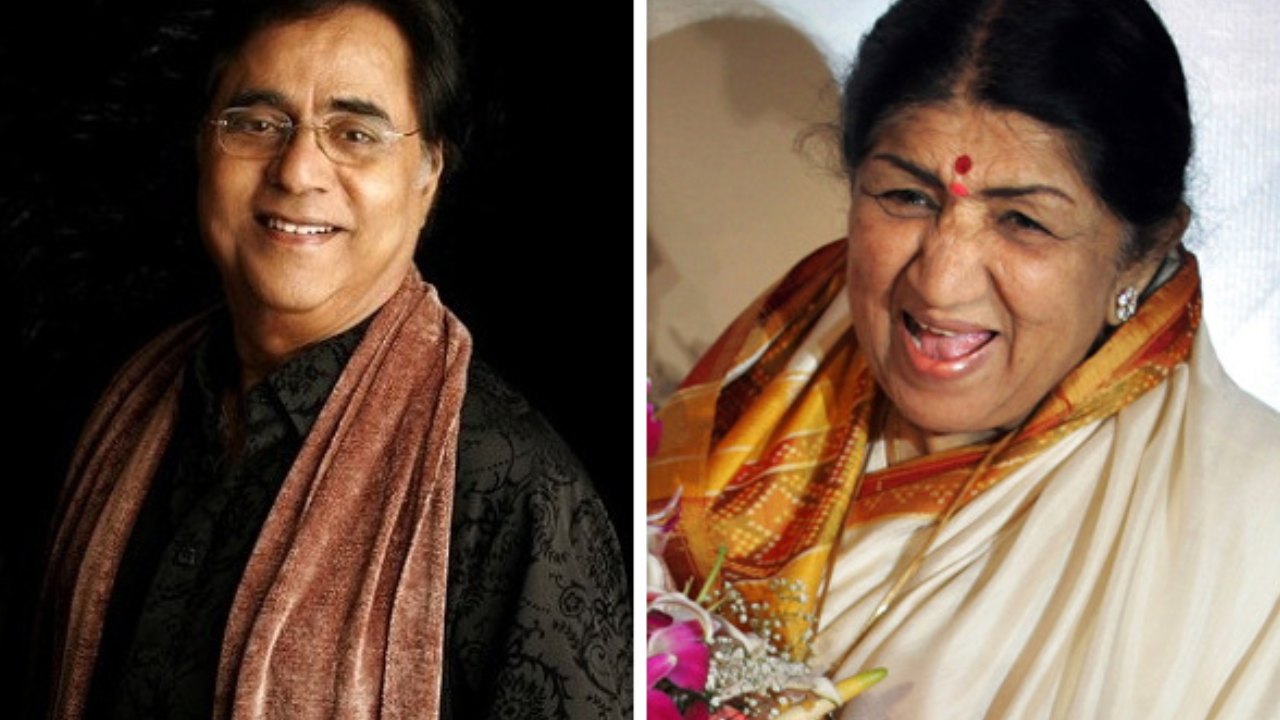One of the many myths surrounding Jagjit Singh’s imposing presence in the field of the pop-Ghazal is that his wife Chitra Singh didn’t allow him to sing with other female singers.
Wrong! In fact Chitraji now 83, went out of the way to make Jagjit Singh’s dream project with Lata Mangeshkar happen.
The monumental album entitled Sajda contains immortal Ghazals featuring Lataji and Jagjit Singh.It is said that Jagjit had composed these Ghazals and hidden them away from his wife in the hope of recording them with Lataji some day.
Demolishing this myth,a source close to the project says, “Aisa bilkul nahin ttha. Chitraji was as big a fan of Lataji as Jagjit Saab. She wanted Sajda to happen. But Lataji kept postponing it for years.”
Jagjit Singh once told me, “Pataa nahin waqt kaise nikal gaya. Chitra and I became so successful we had no idea time for the album that I wanted to do with Latabai. Also,Latabai was busy with numerous recordings day in and day out. We both needed a phase of freedom and respite to do Sajda.”
Sajda finally happened in 1991 after years of dreaming and delay. The credit must go to Sanjeev Kohli, son of the illustrious composer Madan Mohan and at that time a top executive at HMV/Saregama, who pushed for the album to happen.
How much poorer the music world would have been without Sajda! The ground-breaking Ghazals, 7 solos by Lataji and her 4 duets with Jagjit Singh, plus 2 solos by Jagjit are architectural marvels. These are compositions of eternal resplendence, each one a selfcontained Taj Mahal of a creation.
Lataji’s solos Dard se mera daaman bhar de (poetry: Qatil Shifai) ,Meri tasveer mein rang aur kissika toh nahin(Muzaffar Warsi) and Dhuan banake fiza mein uda diya mujhko(Nazeer Baqri) rank among her finest Ghazals, right next to Madan Mohan’s compositions in Adalat and Jahan Ara , and Hridayanath Mangeshkar’s Ghalib.
Then there are her duets with Jagjit Singh, the only songs they sang together: Har teraf har jegah besghumar aadmi, Gham ka khazana tera bhi hai mera bhi and Mili hawaon mein udne ki woh sazaa yaaron…. 40 years after composition, every song in Sajda sounds as fresh and accessible as it was composed yesterday.
Lataji had spoken to me about the album Sajda and Jagjit Singh: “The first time I heard about Jagjit Singh, I was recording with Madan Mohan who told me, ‘Ek Jagjit naam ka ladka aaya hai bahut achcha gaata hai.’ When I heard his voice I was bowled over, but somehow Jagjitji’s voice was not considered suitable for film heroes at that time.As time passed his voice became a household name and he sang for many film heroes.But it was the song Sarakti jaye hai rukh se naqaab ahista ahista which I just couldn’t get out of my head. Jagjitji was highly influenced by Mehdi Hassan and gradually he moulded his voice in his style.He also met his future wife Chitra Singh and they became a very saleable Ghazal-singing couple. So many other couples subsequently tried to emulate the Jagjit-Chitra style, but in vain.”
Lataji revealed that initially Sajda, recorded in 1991, was supposed to have only her solos. “It was supposed to be only me singing to Jagjitji’s compositions. But I told him he had to sing as well. This was my chance to sing with a voice I had liked for years. Sajda was an idea put forward by Madan Bhaiyya’s son Sanjeev Kohli who worked at that time with HMV. They asked me if I would like to do an album with Jagjitji. I was game. Jagjitji got very emotional when I sang his composition Dard se mera daaman bhar de. He was going through a personal tragedy and the song touched his heart.”
The personal tragedy that Lataji alluded to was the death of Vivek, Jagjit and Chitra’s only son who died at age 19 in 1990. It left the couple shattered.Chitra never sang again. Another renowned singer Chithra from the South also lost her only child in a freak drowning accident. She too never sang again.


